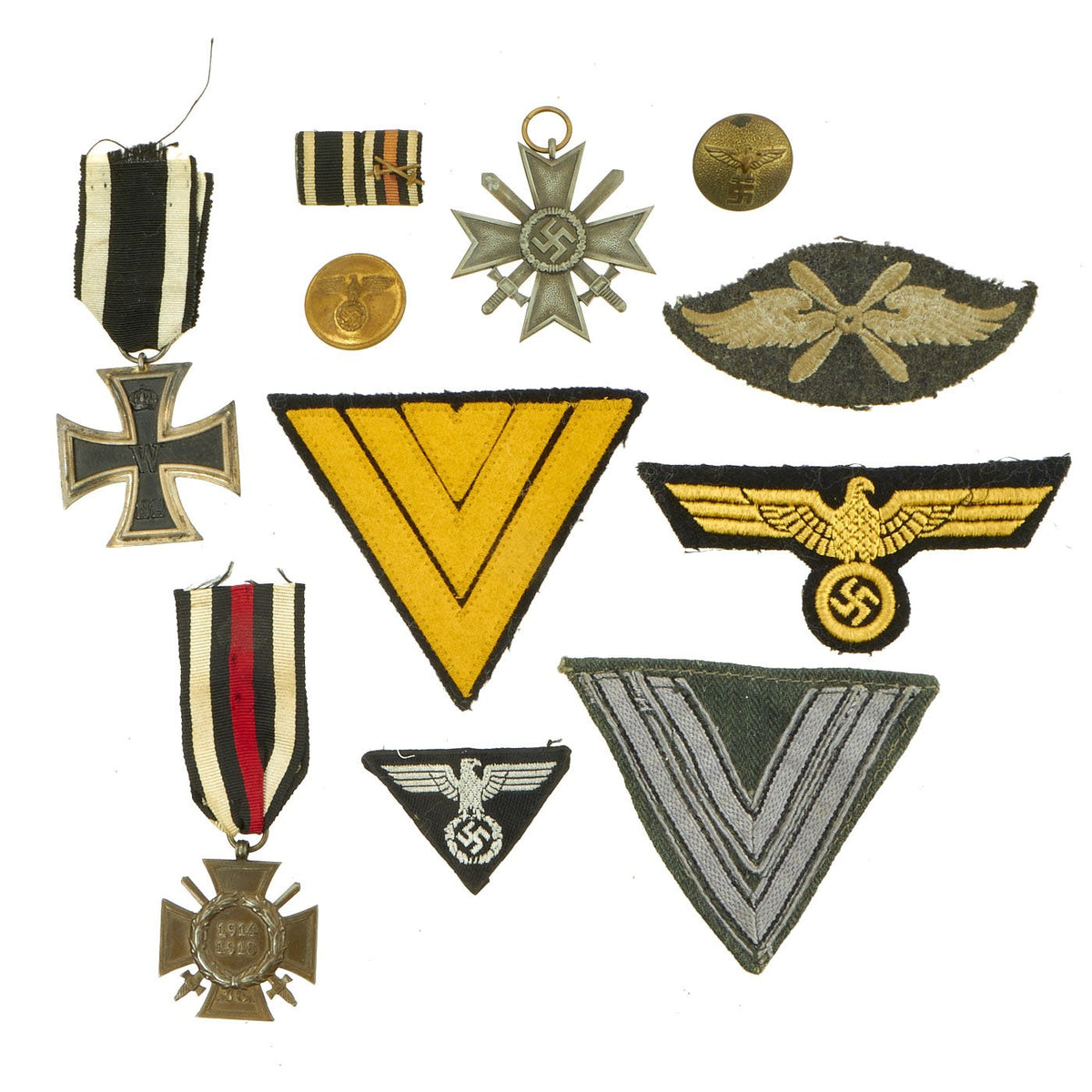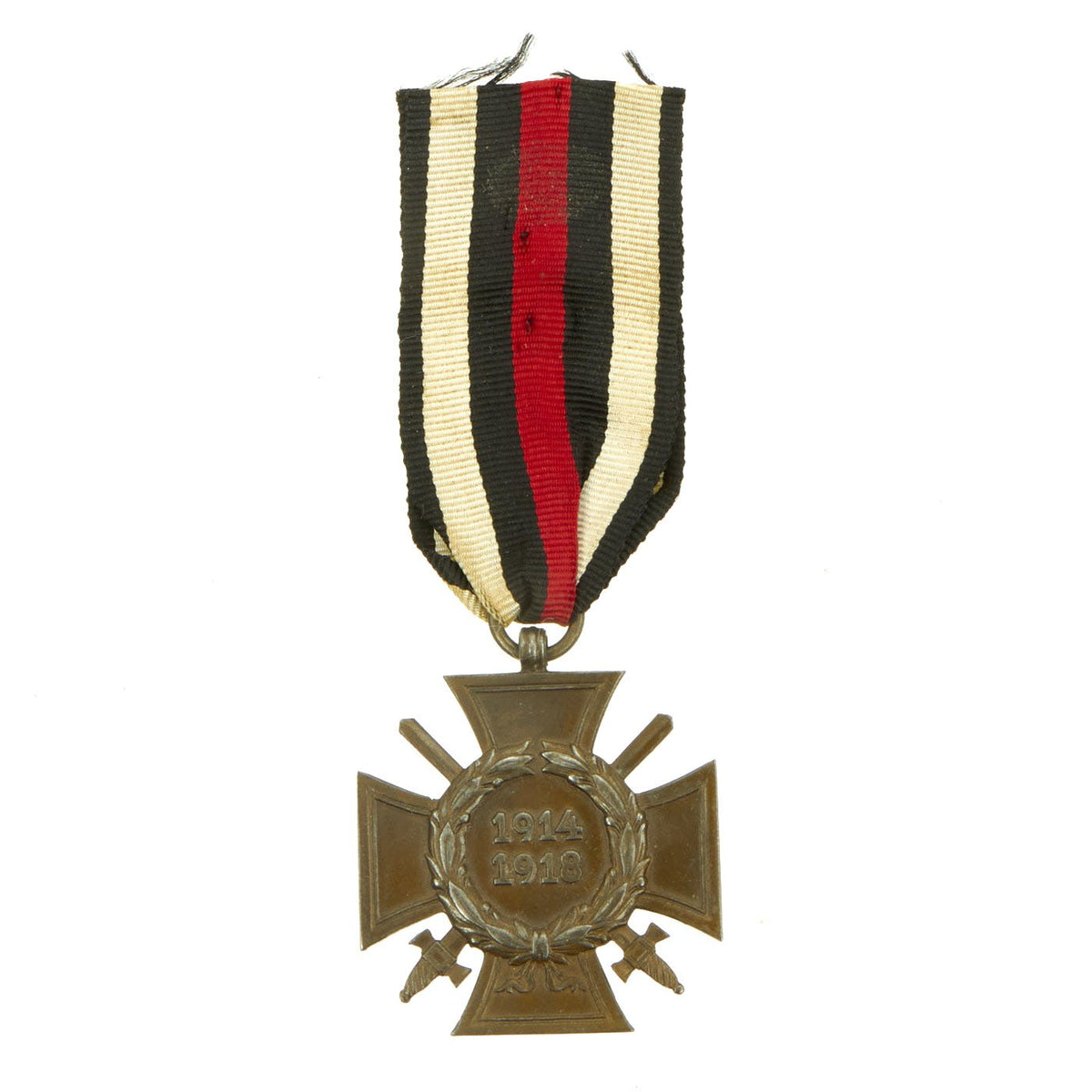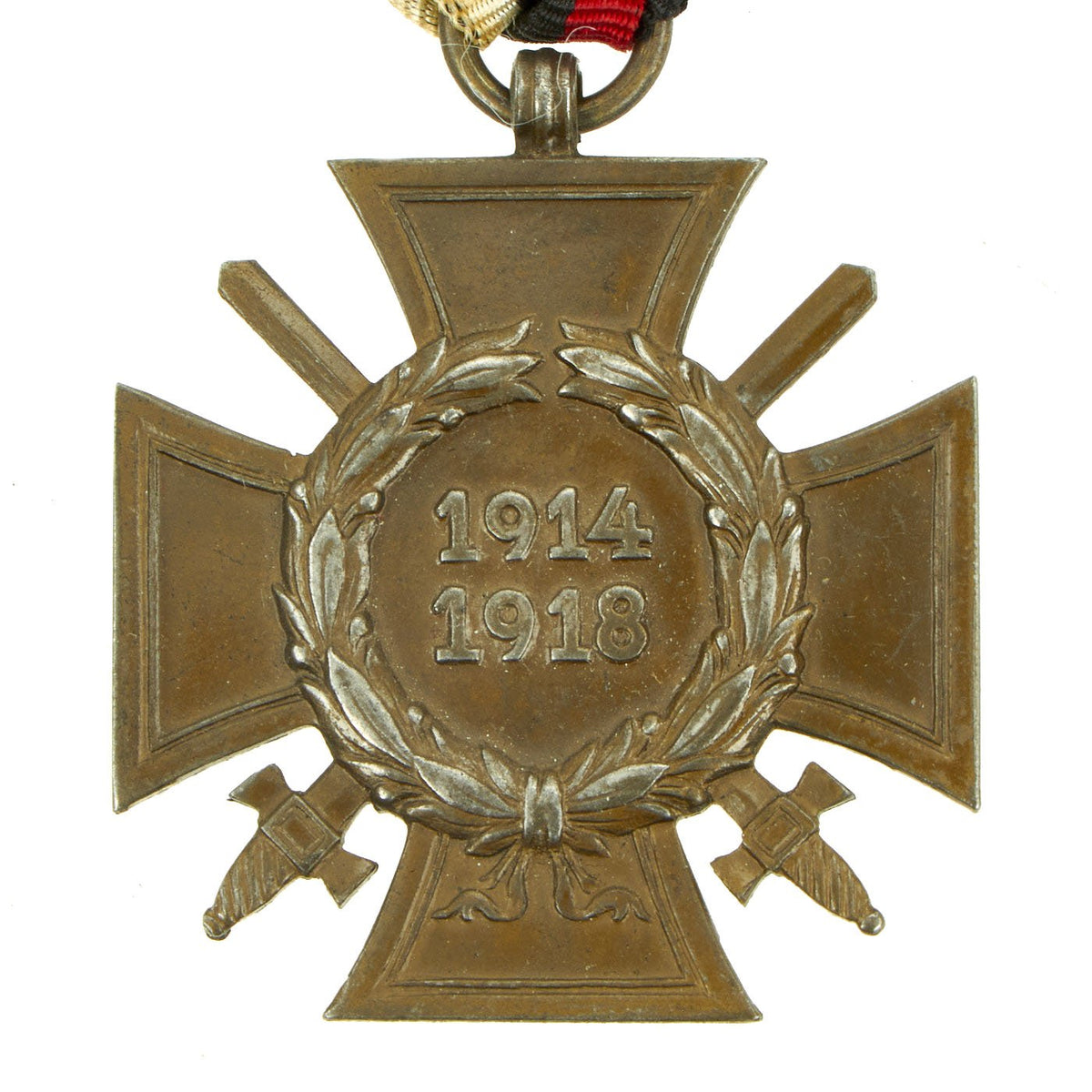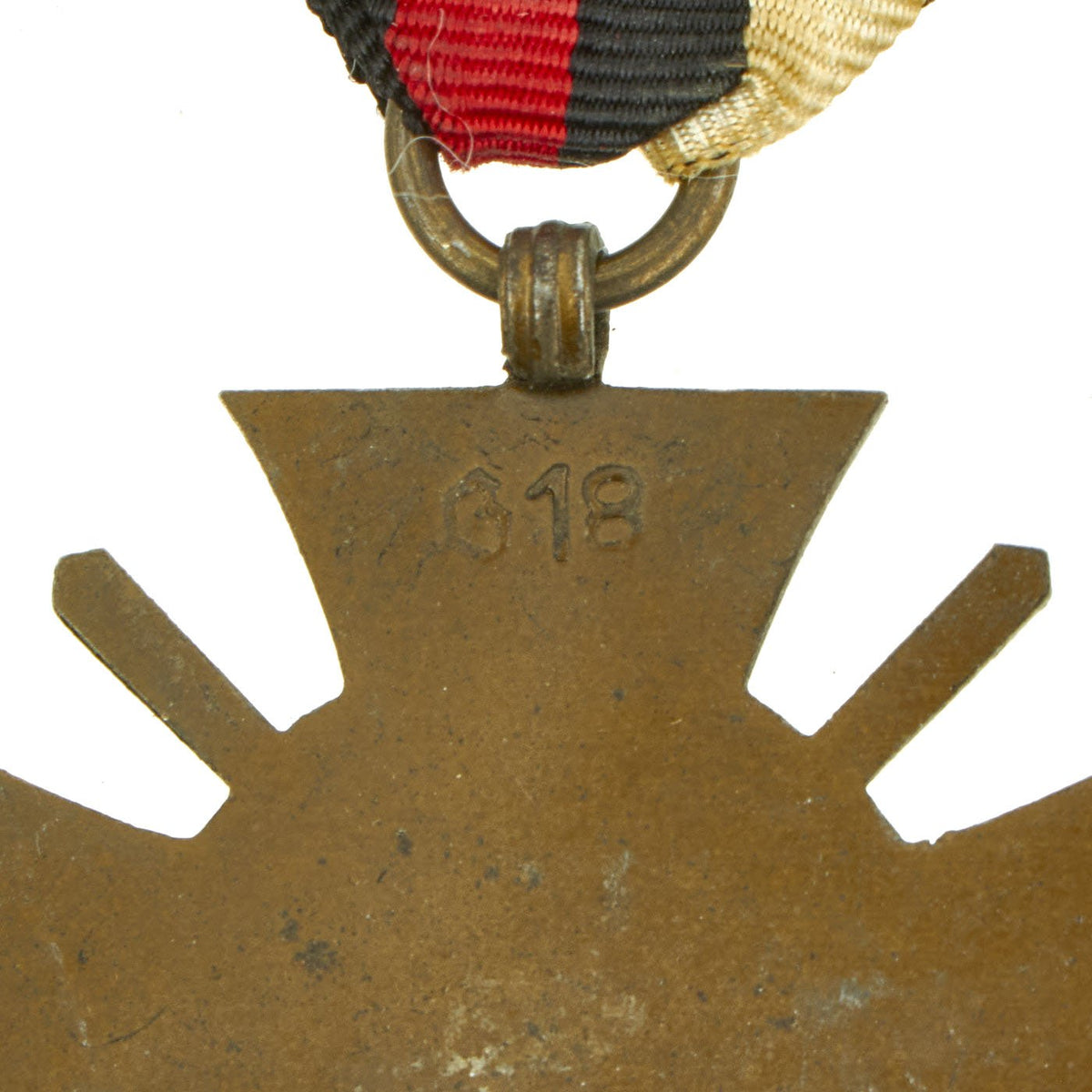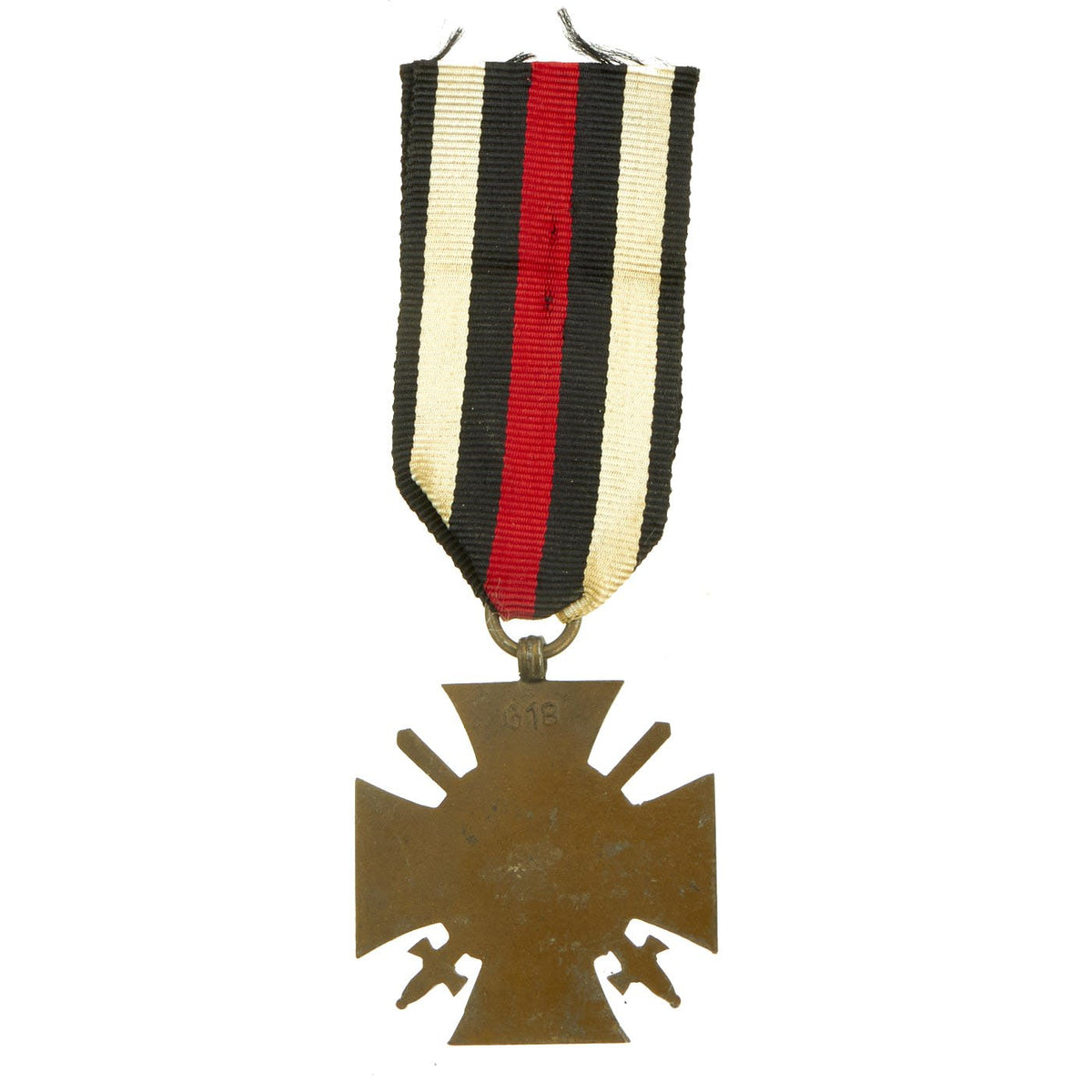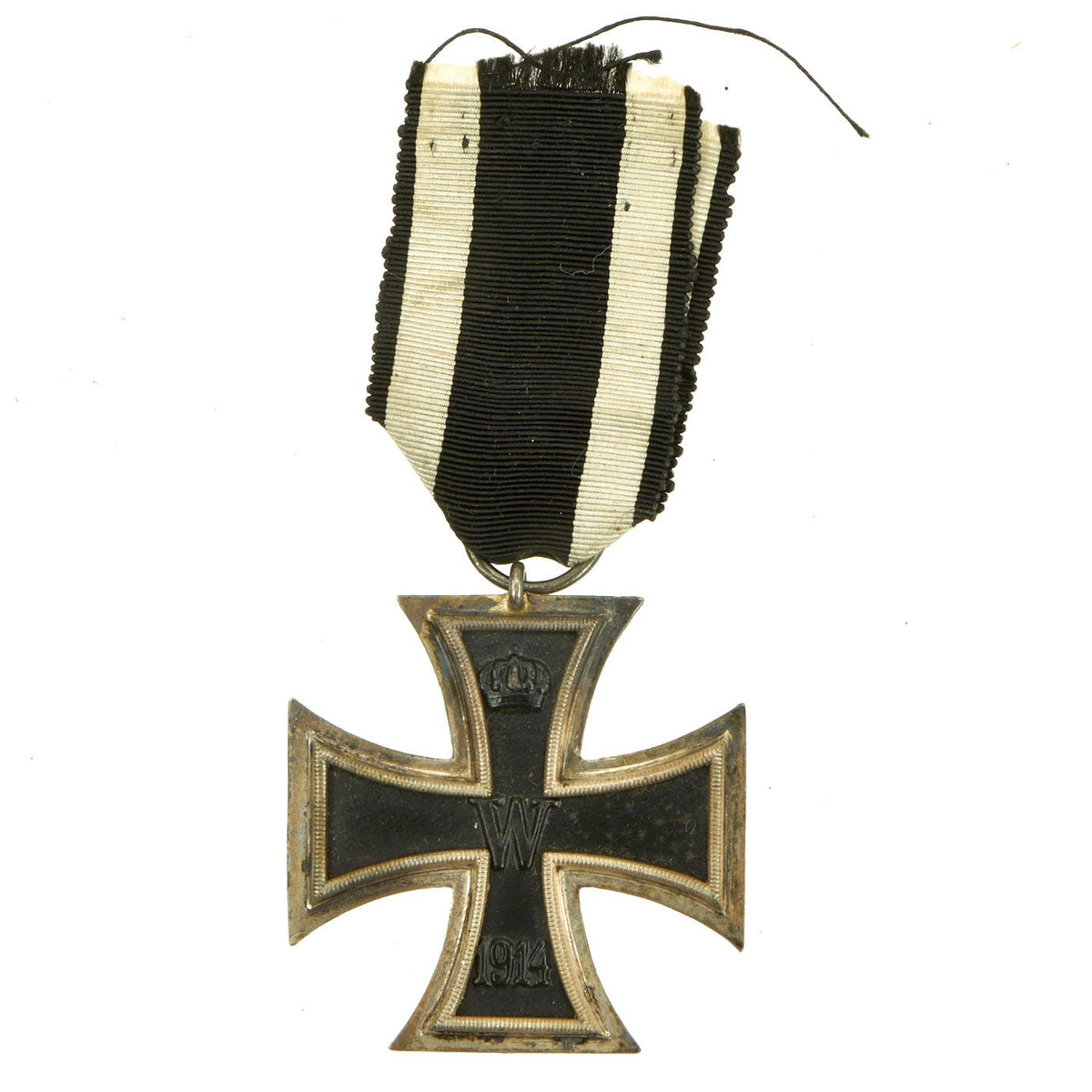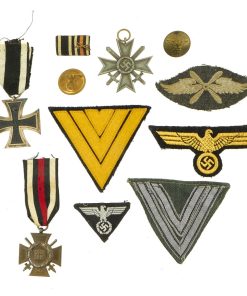Original German WWI & WWII Medal and Insignia Grouping with 1914 EKII, KVKII & Hindenberg Cross – 11 Items Original Items
$ 295,00 $ 118,00
Original Items: Only One Set Available. This is a very nice collection of German WWI & WWII Insignia & Awards, which was brought back from the European theater by a USGI after the war was concluded. It includes some a wide variety of medals and insignia, including a WWI 1914 Iron Cross 2nd Class, a Hindenberg Cross, a WWII War Merit Cross 2nd Class, and more!
This lovely set includes:
– One Imperial German WWI Prussian Iron Cross 2nd Class 1914 (Eisernes Kreuz II. Klasse 1914) with Ribbon. This fine example is in very good condition, with most of the black paint still present on the central cross on both sides. The ribbon is a bit worn, and definitely looks to be original.
– One German WWII War Merit Crosses 2nd Class with Swords (For Combat). It has lost most of the gold wash, and does not have the ribbon.
– One Pre-WWII German WWI Honor Cross of the World War 1914/1918 (Hindenburg Cross) Medal with Cross Swords attached to the correct ribbon. Maker marked G18 on the back.
– One German WWI Era Miniature Ribbon Bar for an Iron Cross 1914 2nd Class and a Hindenberg Cross with Swords. This could go with the two awards with ribbons above.
– One German WWII Kriegsmarine Navy Reichsadler Breast Eagle Patch in unissued condition. Correct dark navy blue backing with gold thread.
– One German WWII small BeVO Reichsadler Cap Patch, black with silver thread.
– One German WWII Luftwaffe Specialist Arm Badge for Flying Personnel – Tätigkeitsabzeichen Luftwaffe Fliegendespersonal.
– One German WWII Wehrmacht Heer Army Mannschaften (Enlisted Men) Double Silver Chevron badge for Obergefreiter (Corporal) rank.
– One German WWII Kriegsmarine Navy Mannschaften (Seamen) Triple Gold Chevron badge for Hauptgefreiter (Seaman 1st Class) rank.
– One German WWII NSDAP Button with RZM M5/71 marked on the back.
– One German WWII Reichsadler Button by Assmann.
A wonderful totally genuine grouping perfect for the German Medal and Insignia collector.
German WWI Prussian Iron Cross 2nd Class with Ribbon:
Established by Frederick William in 1813 for gallantry in action, the decoration was revived several times for later conflicts. The bulk of the issues are divided into 1st and 2nd class versions, but a rare and superior ‘Grand Cross’ was also awarded for successful field commanders. During WW1 the lower decoration was freely awarded with 5½ million second class types issued. Originally, the Iron Cross was an award of the Kingdom of Prussia, however given Prussia’s pre-eminent place in the German Empire formed in 1871, it became an award for all of Germany.
The basic design of the WW1 crosses is a central cross patee struck from iron and mounted in a silver frame which has a raised crenulated decorative border. The obverse of the cross bears the date 1914 under a crowned ‘W’ monogram. Reverse bears an oak leaf cluster with the date of the decoration’s institution, 1813 underneath – the crowned initials of Frederick William are in the top arm above the oak leaf cluster. Suspension for second-class types is by means of a ring, and frequently this ring bears a maker’s stamp.
Please examine the edge seam for authentication, which is not present on reproductions. Iron crosses were commonly constructed from an iron core sandwiched in a surrounding two part silver frame, normally the seam of these two silver parts is visible around the edge of the cross as is seen on this fine example.
War Merit Cross 2nd Class (Kriegsverdienstkreuz) with Swords (for Combat)
This was a decoration of NSDAP Germany during the Second World War, which could be awarded to military personnel and civilians alike. By the end of the war it was issued in four degrees, and had a related civil decoration. It was created by Adolf AH in October 1939 as a successor to the non-combatant Iron Cross which was used in earlier wars. The award was graded the same as the Iron Cross: War Merit Cross Second Class, War Merit Cross First Class, and Knights Cross of the War Merit Cross. The award had two variants: with swords given to soldiers for exceptional service “not in direct connection with combat”, and without swords for meritorious service to civilians in “furtherance of the war effort”. As with the Iron Cross, Recipients had to have the lower grade of the award before getting the next level.
Hindenburg Cross with Crossed Swords (for combat):
The Honor Cross of the World War 1914/1918 (German: Das Ehrenkreuz des Weltkriegs 1914/1918), commonly, but incorrectly, known as the Hindenburg Cross was established by Field Marshal Paul von Hindenburg, President of the German Republic, by an order dated 13 July 1934, to commemorate the distinguished deeds of the German people during the First World War. This was Germany’s first official service medal for soldiers of Imperial Germany who had taken part in the war, and where they had since died it was also awarded to their surviving next-of-kin. Shortly after its issuance, the government of NSDAP Germany declared the award as the only official service decoration of the First World War and further forbid the continued wearing of German Free Corps awards on any military or paramilitary uniform of a state or NSDAP Party organization.
Fast Shipping with Professional Packaging
Thanks to our longstanding association with UPS FedEx DHL, and other major international carriers, we are able to provide a range of shipping options. Our warehouse staff is expertly trained and will wrap your products according to our exact and precise specifications. Prior to shipping, your goods will be thoroughly examined and securely secured. We ship to thousands clients each day across multiple countries. This shows how we're dedicated to be the largest retailer on the internet. Warehouses and distribution centres can be located throughout Europe as well as the USA.
Note: Orders with more than one item will be assigned a processing date depending on the item.
Before shipping before shipping, we'll conduct a thorough inspection of the items you have ordered. Today, the majority of orders will be delivered within 48 hours. The delivery time will be between 3-7 days.
Returns
The stock is dynamic and we cannot completely manage it because multiple stakeholders are involved, including our factory and warehouse. So the actual stock may alter at any time. It's possible that you may not receive your order once the order has been made.
Our policy is valid for a period of 30 days. If you don't receive the product within 30 days, we are not able to issue a refund or an exchange.
You can only return an item if it is unused and in the same state as the day you received it. You must have the item in its original packaging.
Related products
Uncategorized
Uncategorized
Uncategorized
Uncategorized
Uncategorized
Uncategorized
Uncategorized
Armoured Fighting Vehicles of the World: AFVs of World War One (Hardcover Book) New Made Items
Uncategorized
Uncategorized
Uncategorized
Uncategorized
Australian WWII Owen MK1 Machine Carbine SMG Custom Fabricated Replica with Sling Original Items
Uncategorized
Uncategorized
Uncategorized
Uncategorized
Uncategorized
Uncategorized
Uncategorized
Uncategorized
Uncategorized
Band of Brothers ORIGINAL GERMAN WWII Le. F.H. 18 10.5cm ARTILLERY PIECE Original Items
